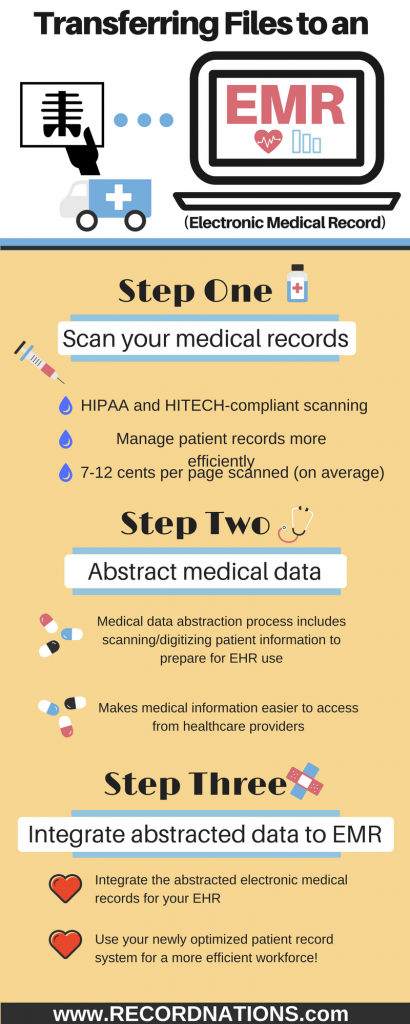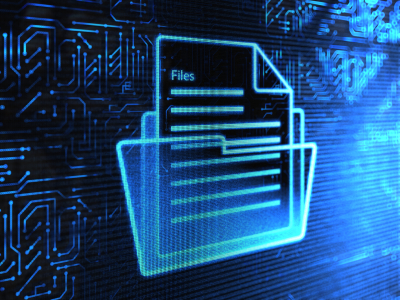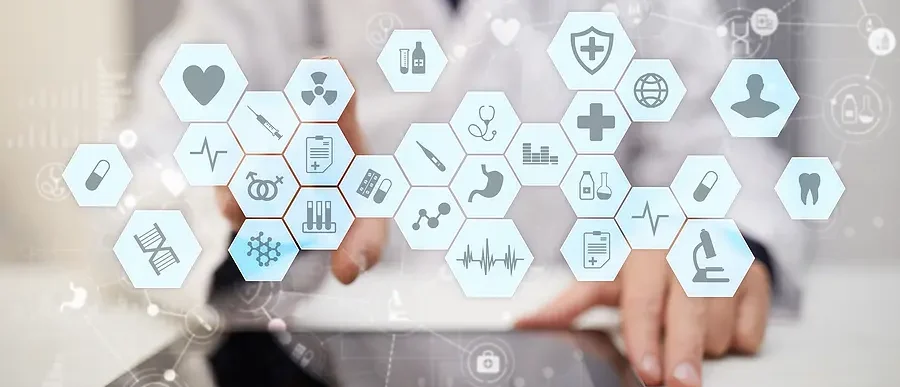
Health Information Technology for Economical and Clinical Health, also known as HITECH, was passed into law in 2009 to promote the adoption of health information technology.
As the world moves towards communicating via a digital landscape, the medical industry faces a mountain of challenges. Patient information needs to be kept secure, there are millions of physical patient records that need to be digitized, and the pace of the industry doesn’t allow for any loss of productivity during a digital transition.
On top of all that, for medical practices, going digital means more than just scanning patient records into an electronic format.
Data abstraction is the process of selectively choosing relevant patient information to include in your organization’s EHRs. Going through this process will make your final product simple and efficient, providing you with only relevant information you need to know.
To make the digitization process as painless as possible, the steps below outline the best way for medical practices to convert to an EHR system while ensuring the end product is clean, efficient, and serves its purpose.
The Most Efficient Way to Convert to an EHR System
Step one: scan your records
 The first step in any digitization process is scanning. Depending on the volume of paperwork you have to scan, you can devote a current employee to the task or hire a professional medical scanning service provider operating within HIPAA guidelines.
The first step in any digitization process is scanning. Depending on the volume of paperwork you have to scan, you can devote a current employee to the task or hire a professional medical scanning service provider operating within HIPAA guidelines.
Scanning your files allows you keep a digital record which you can access remotely and easily share and store. It also allows you to free up office space as you know longer need to keep physical copies of records on hand.
Related article: Medical Record Scanning
Step two: data abstraction
This is an important step that should not be overlooked. Data abstraction allows you to selectively choose the bits and pieces of patient information that are valuable to your organization and include them in your EHRs.
You can sort through family history data, allergy information, current medications, immunization records, key patient demographic data and much more to organize and display it as you need.
The importance of this step cannot be overemphasized. This is where your organization gets to decide how your new EHRs will look and function. It gives you control over customization.
Related article: Medical Data Abstraction
Step three: integrate your data with your EHRs
Once you’ve selected the data that is pertinent to your organization, integrate it into your EHR system. You will find that the benefits of a digital patient records management system are great.
Electronic files are readily available to be shared freely between offices, laboratories, and patients. Workflow is streamlined as records are easily accessible. There is also less of a chance of misfiling records and no longer a need to decipher unreadable handwriting.
And when doctors, nurses, and physicians are looking only at the information they need to see, the whole system is simpler and more efficient.
Related article: Implementing Electronic Health Records
Need Help with Data Abstraction or Medical Record Scanning?
Record Nations helps doctors offices, hospitals, clinics and more around the U.S. go digital. We offer a HIPAA and HITECH compliant data abstraction and medical record scanning services so medical practitioners can focus on their patients.
Call us at (866) 385-3706 or fill out the form on the right to get help going digital today.












